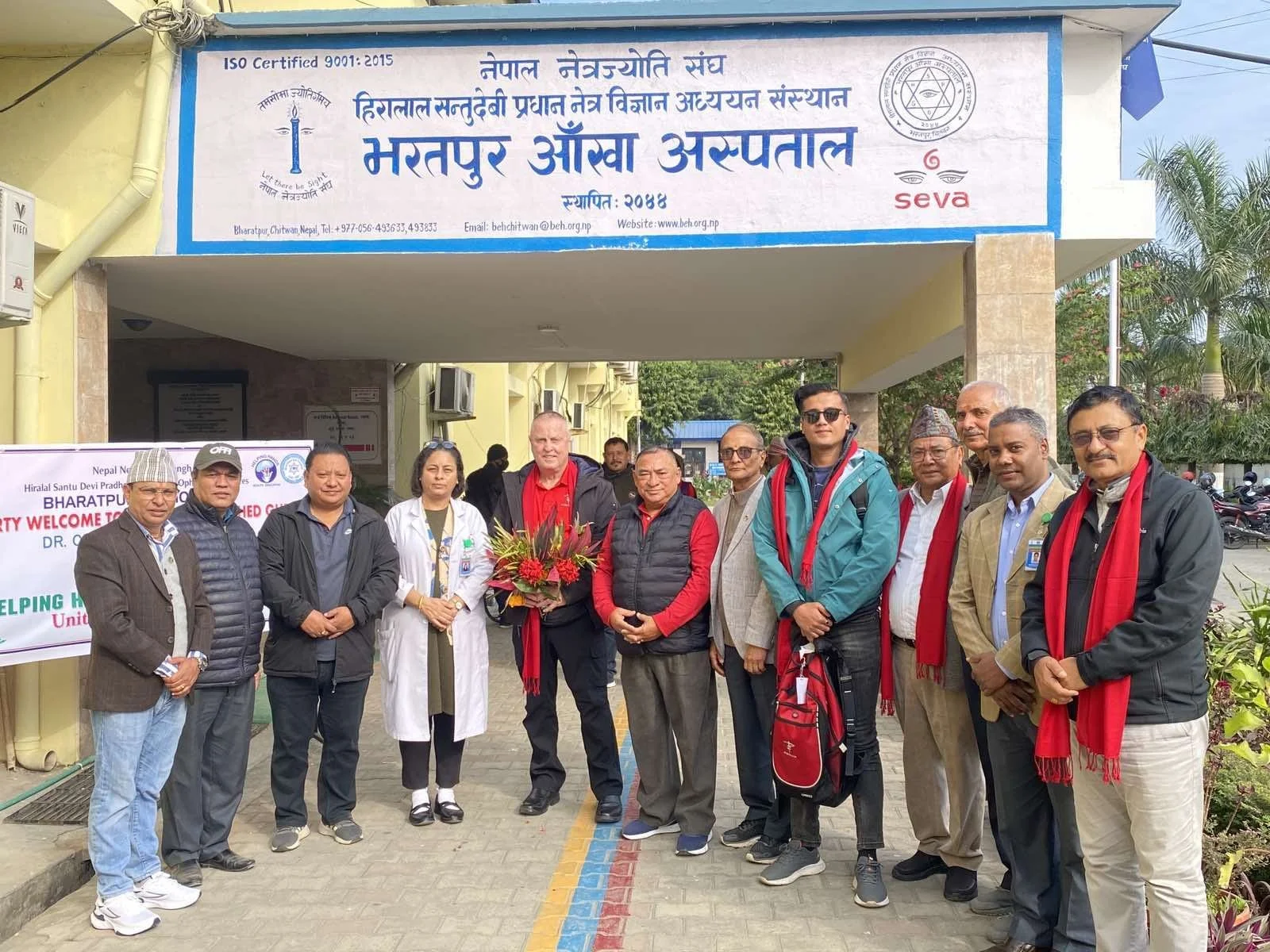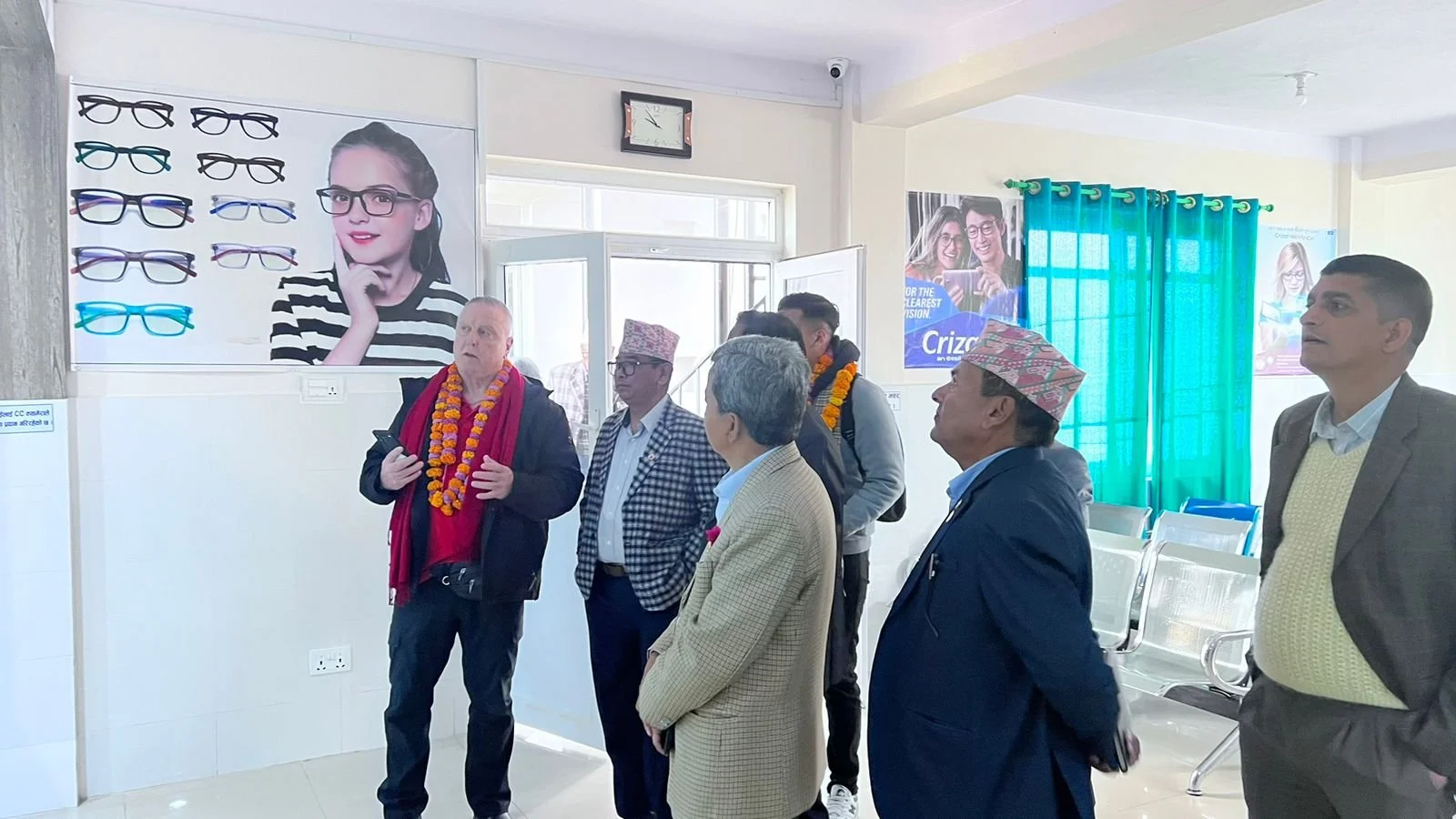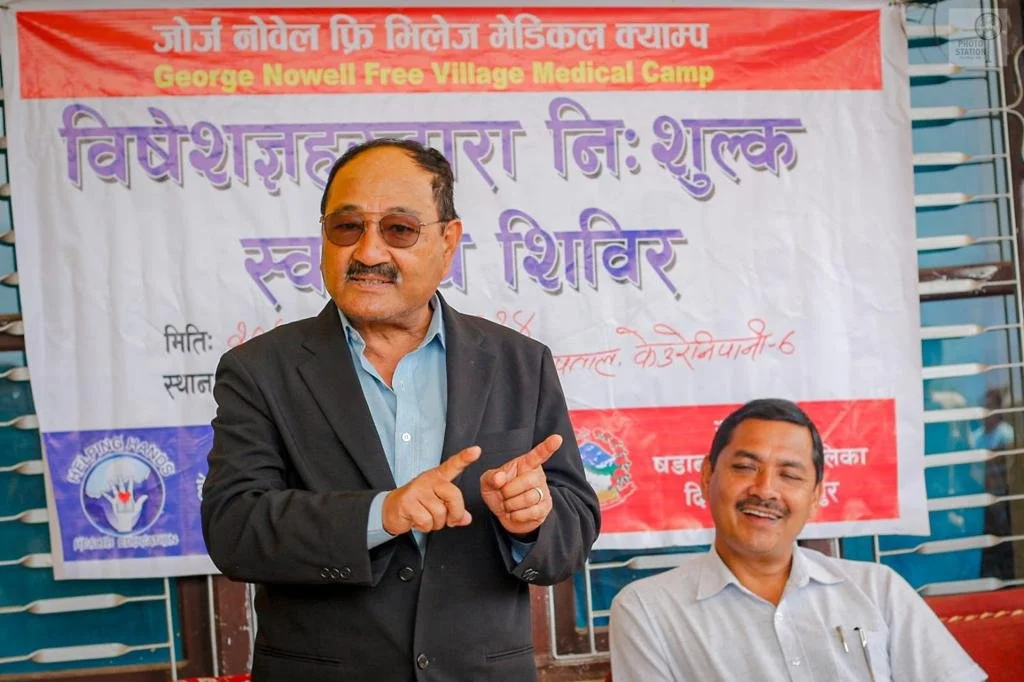Surveying Bharatpur Eye Hospital For Equipment Donation
On 12/06/2023, as part of Project C.U.R.E's efforts to provide vital medical equipment to underserved hospitals, Helping Hands and Project C.U.R.E visited Bharatpur Eye Hospital in Nepal. Led by Charles Godfrey Irion, our team embarked on a survey to assess the hospital's needs and determine the appropriate equipment for donation. The visit was eye-opening, to say the least. We were greeted by a dedicated staff who tirelessly work to address eye health issues in the community. However, we also witnessed the hospital's scarcity of necessary equipment, hindering their ability to provide quality care. It reinforced the importance of our mission and solidified our commitment to equip Bharatpur Eye Hospital with the tools they need to save sight and change lives.
Surveying Chhanda Kalebabu Narayani Eye Hospital
At Helping Hands Health Education, in collaboration with Project C.U.R.E, on 9th December 2023,we recently conducted a thorough survey of Chhanda Kalebabu Narayani Eye Hospital to assess the equipment needs for donation. The survey aimed to identify any gaps in their current resources and understand how we could assist in enhancing their capacity to provide eye care services. We were impressed by the dedication of the hospital staff and their commitment to serving the community. Our findings highlighted several crucial areas where additional equipment donations would significantly improve the hospital's ability to deliver quality eye care. With the support of donors and generous contributions, we can make a tangible impact on the lives of patients at Chhanda Kalebabu Narayani Eye Hospital and help them experience better eye health and improved vision.
Surveying Lamahi and Rapti Eye Hospital
As part of our collaboration with Project C.U.R.E and Helping Hands, we recently surveyed Lamahi and Rapti Eye Hospital to assess their equipment needs. Our aim was to identify the specific equipment required to enhance the quality of eye care services provided at these hospitals. During the survey, we engaged with the dedicated staff and carefully evaluated their existing equipment resources. By understanding the unique challenges faced by the hospitals, we can now work towards the procurement and donation of the required equipment to help improve the level of eye care available to the local communities.
A 3-day free health clinic at Dingla, Bhojpur
Free Medical Camp at Parsa District Nepal
Free medical camp organized by Helping Hands USA and Sahasenani Dr. Rebanta Pathak Ojha Trust was completed successfully in Parsa district. The camp provided free medicine to around 400 eye patients and distributed glasses to approximately 1,100 locals who came for health check-ups.
The event was organized by the international president of Helping Hands, senior social worker and resident of Khadbari, Narayan Shrestha, along with the President of Nepal Film Society USA, artist Navaraj Shrestha. Also present at the event were the head of social service at Dr. Rebanta Pathak Trust, Pathak Agency CEO Sunil Pathak, and other members.
At the camp, Nepali doctors provided medical services for eye and dental problems, while New Zealand specialist Dr. Jamie and physician Dr. Terry also provided services.
Helping Hands has been organizing free health camps in rural areas for a long time, and has been involved in various social activities.
Over the years we have organized 378 missions and have helped more than a million people in many different countries. We have a 100-bed hospital in Kathmandu as well as smaller hospitals and clinics in various villages. We also have a school in the village of Khandbari serving children from kindergarten through 10th grade. Because of the focus on health and education, we have added an agricultural component into our operations. We have connected with an excellent organization from Japan, the Shumei International Institute, to implement this agricultural work and study.
Medical, non-medical, premedical students, and medical residents, as well as professional doctors (dentists, surgeons, and nurses) can volunteer from two weeks, several months, or up to a year, depending upon personal availability.
We always welcome teachers and other volunteers to teach at our school in Khandbari, the Surya School. We prefer for teachers to commit to a minimum of four months, and as long as two years. Our main needs for teachers are for the subjects of English, math, science and computer science. Applications are accepted throughout the year.
High-Altitude Physiology Course at Makalu Basecamp: November 2nd - 21st, 2019
This intensive 3 week course developed by the famous inventor Professor Gamow is intended to introduce both undergraduate and graduate students to the basic principles of biophysics and physiology of high altitude environments in the world’s greatest natural laboratory – the Nepalese Himalayas! This adventure of a lifetime will immerse you in the rich culture and natural beauty of Nepal as we trek through dramatic landscapes filled with raging rivers, remote Sherpa villages, and majestic peaks on our way to Makalu (World's 5th highest mountain: 27,838') Basecamp. This fully supported expedition will include daily lectures and experiments taught by Dr. Aaron Shupp, MD and additional tours and presentations by Nepali instructors affiliated with Helping Hands Health & Education, a NGO focused on solving health and education disparities in Nepal and the developing world. Whether you are a science or non-science student or just an adventurer looking to have an incredible trek with a scientific focus, Dr. Shupp will guide you through hands-on physiology experiments to learn how your own body preforms at and adapts to high altitude. Earn three university credit hours while engaging in an experience of a lifetime! This course is taught as a part of Helping Hands Semester in Nepal Program in addition to a stand-alone program.
Cost: Tuition: $3,250 USD (with University Credit) or $2,500 USD (without University Credit) – Includes domestic air and ground transport within Nepal, guide and porter services, hotel and trek lodging, most meals, and course texts and lab equipment including oximeters and Gamow Bag.
Click the button below to learn more
We are currently doing medical work in three regions:
Khandbari
Khandbari is in the Eastern part of Nepal, near the fifth highest mountain in the world, Mount Makalu. This is the town where the founder of Helping Hands Health Education, Mr. Narayan Shrestha, was born and raised, and where he first thought of the idea to start Helping Hands to bring medical and educational help to this region. To get to Khandbari, you will fly from Kathmandu to Tumlingtar Airport, then take a 20-minute car ride up to the town.
Trips usually conducted in January, March, and November.
Minimum Volunteer Itinerary (2-3 weeks, including travel time)
5 days in the village of Khandbari working in the hospital and the school
3 days to another village near Mount Makalu
3 days touring city and temples in Kathmandu
9 days hiking into the Annapurna area, which is located in Western Nepal (2 nights will be spent in Pokhara)
Chainpur, Nepal
Chainpur is situated in the Arun Valley. The 15-bed Helping Hands Clinic in Chainpur includes a lab, pharmacy, and operating room. Our clinic provides care for 150,000 in the surrounding areas. The clinic was built with donations raised in the US with help from the local Nepal HHHE members and the community under the leadership of Mr. Shrestha.
Volunteers can join us individually or as a group year round.
Barabisse, Sindhupalchok
Barabisse is very popular with business people who travel to and from Tibet, and is the only route to travel to and from China. The district Sindhupalchok was one of the hardest hit by the April 25th 2015 earthquake. HHHE sent its first relief team to this district, and we would like to continue our presence in this town. Volunteers who sign up to go to this area are highly appreciated!
Trips usually conducted in May and September.
Basic Trip Itinerary (3 weeks, including travel time)
8 days of medical work in Barabisse (it will take 5 hours to drive each way)
3 days touring city and temples in Kathmandu
9 days hiking into the Annapurna Area, which is located in Western Nepal (2 nights will be spent in Pokhara)
June, July, and August
Because of the monsoon season, the weather is very hot, humid and rainy during this time. We do not schedule any formal trips to our villages, however we can send volunteers to work in our hospitals in Kathmandu, Chainpur, and Khandbari. This is a great time for medical and pre-medical students to participate and gain hands-on experience with local doctors. HHHE has sent many such volunteers during these months. We emphasize the importance of volunteer involvement during these particular months. We can offer two weeks, one month, or any other amount of time that you can give to us.
ABOUT NEPAL
Nepal shares borders with the Tibet Autonomous Region of China in the north and with India in all other three sides. The country has an extreme topography and climate. The altitude ranges from 70 meters to 8848 meters and the climate varies from tropical to polar in the short distance of about 120 miles between the southern and northern borders. The country is an average of 553 miles east to west. This small land-locked country is located more than 1000 km from Calcutta, India, its most important port.
Nepal’s population in terms of race and language can be divided into two main groups: the Aryans, an Indo-European speaking group, and the Mongolian Tibetan-Burmese speaking ethnic groups. Nepali, a language originating from Sanskrit, is the mother tongue of about 50% of the population. The remainder speak other languages such as Maithili, Bhojpuri, Tharu, and Tamang, as well as others.. The majority of the population is Hindu (80.62%), the state religion until 2008. The other religious affiliations include Buddhists (10.74%), Muslims (4.2%) and Christians (0.45%). Nepal’s population is estimated at 31.5 million (July 2015) with an annual growth rate of about 1.79% (2015 estimate). About 30% of the population is under the age of 15 years.
Nepal is one of the groups of countries classified by the UN as least developed. With a GDP per inhabitant of US $2400 (2014 estimate), Nepal ranks with African countries such as Zimbabwe and Senegal as one of the world’s poorest countries. No clear documentation on absolute poverty in Nepal is available and figures vary, depending on calculation methodology, from 40-71% of the population.
Social development remains at a very low level. Infant mortality is 39 per 1000 live births (2015) and average life expectancy is 66.2 years of age for men and 68.9 years of age for women. Only 63.9% of the population can read and write–76.4% of men and 53.1% of women (2015 estimate).
In the health sector there were only 89 hospitals with 6796 beds in the fiscal year 2005-06. In the same year there were 1,259 doctors working in the government hospitals together with 11,637 nurses and 7,491 health assistants.
A Trip to Bharatpur Eye Hospital
Helping Hands President Mr. Narayan Shrestha visiting Bharatpur Eye Hospital, Chitwan. The Management Committee of the hospital organized a welcome ceremony for Mr. Shrestha and gave a brief presentation of how the reading glasses donated by Helping Hands are being distributed.



































